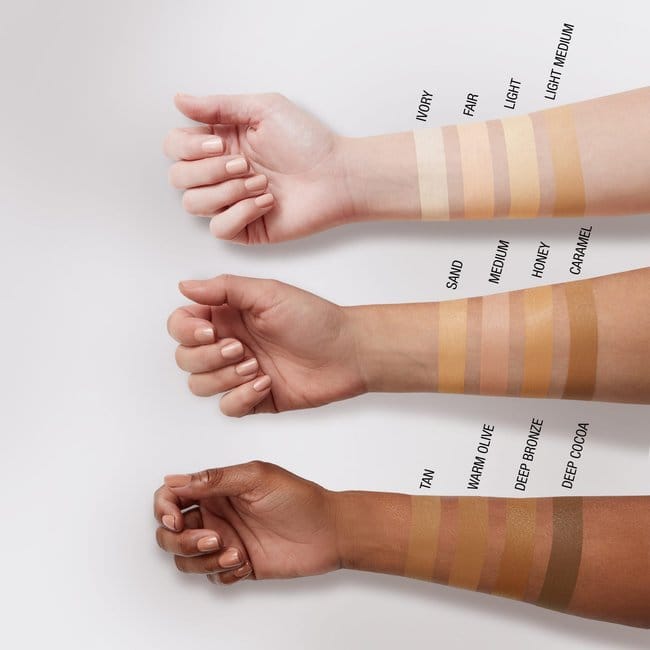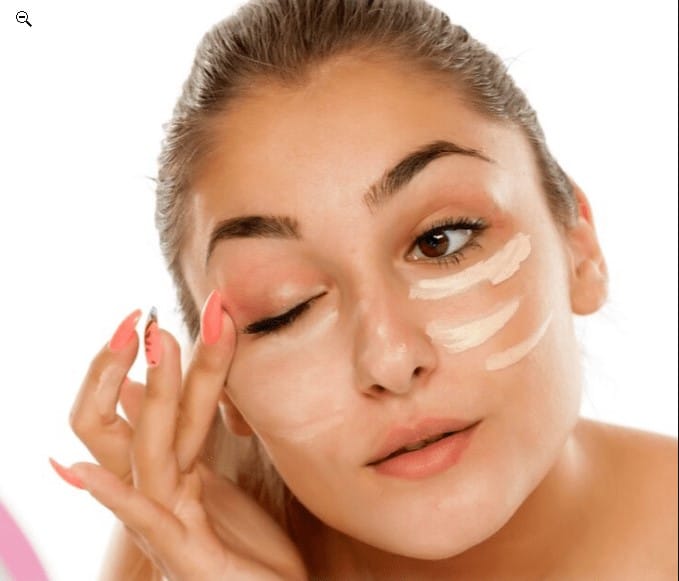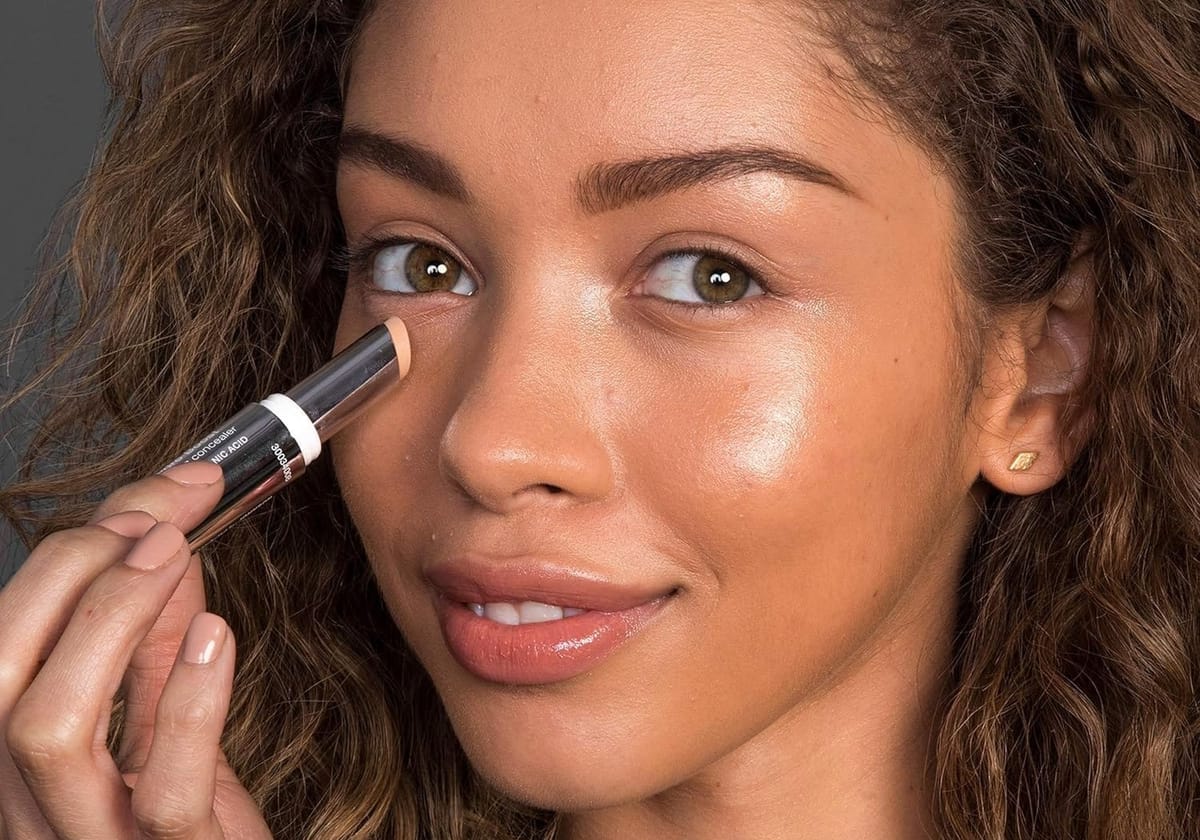Key Takeaways:
- Understanding your skin's undertone is crucial for selecting the right concealer shade.
- The purpose of the concealer (covering dark circles, blemishes, etc.) determines whether you should opt for a shade lighter or darker than your natural skin tone.
- Testing concealer shades in natural light can significantly improve your chances of finding the perfect match.
Choosing the right concealer shade can be as pivotal to your makeup routine as finding the perfect pair of jeans is to your wardrobe: it can either make or break your look. With so many shades available, selecting the ideal concealer can seem overwhelming. This guide will walk you through the steps to identify the perfect concealer shade that not only matches your skin tone but also addresses your specific skin concerns.
Understanding Skin Undertones

Before diving into the sea of concealer shades, it's essential to determine your skin's undertone. Skin undertones are generally categorized into three types: cool, warm, and neutral. Cool undertones tend to have hints of blue or pink, warm undertones exhibit yellow or peachy hues, and neutral undertones are a mix of both. A quick way to identify your undertone is by looking at the veins in your wrist; blue or purple veins suggest cool undertones, while greenish veins indicate warm undertones. If it's hard to distinguish the color, you likely have neutral undertones.
The Role of Lighting in Shade Selection
When testing different concealer shades, always use natural light, as artificial lighting can alter the appearance of the concealer's true color. Step outside with a mirror or sit by a window to apply the concealer. This ensures the shade you choose looks as natural as possible in day-to-day lighting.
Matching Concealer to Skin Tone
For a natural look, your concealer should either match your skin tone or be one shade lighter, especially if you're aiming to brighten the under-eye area. Makeup artists suggest that using a concealer that matches your foundation color can help achieve a seamless blend. However, for specific issues like under-eye circles or dark spots, opting for a shade lighter can help illuminate and lift these areas.
Choosing Based on Coverage Needs
The type of imperfections you want to cover also influences the choice of your concealer shade. For dark circles, a lighter concealer is typically recommended to brighten the under eye area. For acne scars or dark spots, a concealer that matches your skin tone will provide adequate coverage without drawing attention to the problem area.
The Importance of Concealer Formulas
The formula of the concealer can also impact how the shade looks on your skin. Liquid concealers are great for dry skin or for covering large areas as they offer buildable coverage and a more natural finish. For oilier skin or for targeting smaller, more specific areas, a stick or cream concealer might be preferable due to their thicker consistency and longer-lasting coverage.
How to Identify Your Skin's Undertone for Concealer Selection
Identifying your skin's undertone is a pivotal step in mastering how to choose a concealer shade that seamlessly blends with your complexion. Skin undertones are generally categorized into three types: cool, warm, and neutral. Individuals with cool undertones will notice their skin has hints of blue or pink, and they often look better in silver jewelry. On the other hand, those with warm undertones have a golden, peachy, or yellow cast and are complemented by gold jewelry. Recognizing whether you have a cool, warm, or neutral undertone can dramatically refine your makeup choices, ensuring a natural and cohesive look.
For those struggling to find their undertone, a simple test can be helpful. Look at the veins on your wrist under natural light. If your veins appear blue or purple, you likely have a cool undertone. If they look green, you have a warm undertone. Veins that seem to be a mix of blue and green indicate a neutral undertone. Understanding this aspect of your skin color is crucial when selecting the right shade of concealer, as it helps in achieving a flawless finish that complements your natural hues, rather than contrasting with them.
How Concealer Reacts to Different Skin Tones
When selecting a concealer, understanding how your skin reacts to various shades is crucial. For individuals with a fair skin tone, concealers that are too dark can appear stark and unnatural, while those with an olive skin or darker shade might find lighter concealers to give a grayish or ashy appearance. This mismatch can highlight rather than hide imperfections. It's essential to test the concealer under natural lighting to see how the color adjusts to your skin throughout the day, ensuring that the product blends seamlessly without altering its hue.
For those tackling under eye concerns, the choice of under eye concealer should be a shade lighter than the skin tone to brighten the area effectively. However, if the concealer is too light, it can draw unwanted attention to the under-eye area, making it look more prominent and unnatural. The key is to find a balance where the concealer illuminates the under-eye without creating an obvious contrast with the rest of your face. This approach helps in achieving a natural, flawless look that enhances your overall complexion.
Strategic Use of the Colour Wheel in Concealer Application
The colour wheel is a valuable tool in makeup, especially when applying concealer to cover blemishes or discoloration. For instance, green-toned concealers are perfect for neutralizing redness due to acne or irritation, as green and red are opposite on the colour wheel. Similarly, a concealer with peach or orange undertones can be effective against blueish under-eye circles, making it a staple for those who want to look refreshed.
Moreover, understanding the colour wheel can aid in customizing concealer shades to better match your skin's undertone. If your skin has a yellow undertone, a concealer with a slight yellow base can improve skin tone harmony, making your makeup look more natural and cohesive. This technique allows for subtle yet impactful corrections that can enhance your overall appearance, ensuring that your concealer not only hides flaws but also complements your natural skin tone.
Selecting the Right Concealer for Different Skin
Types and Concerns
Choosing the best concealer also involves considering your skin type and specific concerns such as under-eye circles or blemishes. For oily skin, a liquid concealer with a matte finish might be the best option to prevent creasing and ensure longevity. Those with dry skin might prefer a creamier formula that hydrates while it conceals, avoiding the cakey look that can emphasize fine lines. It's essential to select a product that not only matches your skin tone but also addresses your unique skin needs to enhance your overall makeup application.
For covering blemishes, a concealer that is one or two shades darker than your skin tone can be effective, especially for deeper skin tones. This technique helps in camouflaging the blemish while blending smoothly with the surrounding skin area. On the other hand, to brighten under-eye circles, going for a concealer that is one or two shades lighter than your natural skin tone can add luminosity and lift to the area. Each choice in shade and type plays a strategic role in crafting a more polished and radiant appearance, making concealer a versatile tool in your beauty arsenal.
Testing Before Buying

Always test the concealer on your skin before purchasing. Apply a small amount to your jawline to assess how well it blends with both your face and neck. This test allows you to determine if the shade seamlessly disappears into your skin, indicating a good match.
Adjusting Shades Seasonally
Your skin tone can change with sun exposure, so you might need a different concealer shade in summer compared to winter. Keep a lighter and a darker concealer in your makeup kit to mix and match as your skin tone changes throughout the year.
When to Use Color Correctors
If concealer alone doesn't cover your skin concerns, color correctors can be used underneath to neutralize discolorations. For instance, a green corrector can neutralize red blemishes, while a peach or orange corrector can cover blue or purple under eye circles in darker skin tones.
Application Techniques for Best Results
The way you apply concealer can also affect how the shade looks. Use a fluffy brush or a damp makeup sponge for a more diffused, natural look. For more precise application, such as on blemishes or dark spots, use a small, pointed brush.
Mixing Shades for the Perfect Match
Sometimes, the perfect concealer shade is achieved by mixing two different shades. This is especially useful if you're between shades or if your skin tone varies between seasons. Having more than one shade in your makeup bag gives you the flexibility to create a custom shade that matches perfectly year-round.

Q1: How do I know if a concealer shade is too light or too dark?
A1: If a concealer shade is too light, it will make the area look ashy or overly bright. If it's too dark, it will make the skin appear muddy or uneven. The concealer should blend seamlessly into your skin without leaving any visible lines.
Q2: Can I use the same concealer for under eye circles and blemishes?
A2: While you can use the same concealer for both, it's often beneficial to use a lighter shade for the under eye area to brighten it and a shade that matches your skin tone for blemishes to ensure they are adequately covered without drawing attention.
Q3: How often should I replace my concealer?
A3: It's recommended to replace your concealer every 6 to 12 months. Not only does the formula start to degrade after this time, but the risk of bacterial buildup increases, which could lead to skin irritation or breakouts.

Choosing the right concealer shade involves understanding your skin's undertone, using natural light for testing shades, and selecting a color based on what you need to cover. Remember to consider the formula and always test the product on your skin before purchasing. With these tips, you can find the perfect concealer shade to enhance your natural beauty and cover imperfections seamlessly.










